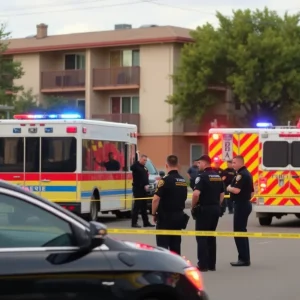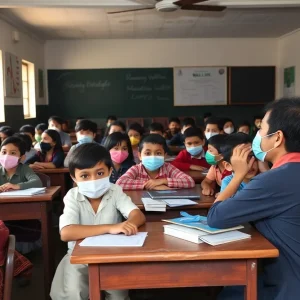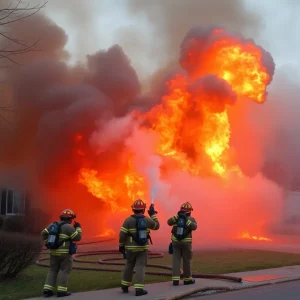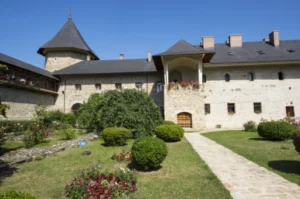News Summary
In 1954, San Antonio’s second-graders courageously participated in vaccine trials aimed at eradicating polio, a disease that had severely affected their community. Approximately 13,000 children were enrolled, each becoming a ‘Polio Pioneer’ in the fight against this debilitating illness. The trials resulted in a highly effective vaccine, significantly reducing polio’s impact and paving the way for a healthier future. This initiative stands as a testament to community resilience and the pivotal role of young heroes in public health.
San Antonio’s Second-Graders Step Up for Polio Vaccine Trials in 1954
San Antonio, a city rich in culture and community, made headlines back in 1954 as second-graders took a brave step toward eradicating polio. The urgency of the situation was palpable, especially after a polio epidemic in 1946 had shuttered parks, schools, and recreational spots, leaving a mark on childhood experiences throughout the region.
The Call to Action
Back in the day, Gilbert Sanchez and his classmates were part of a vital campaign to combat this relentless disease. With the genius of Dr. Jonas E. Salk at the helm—he had developed a groundbreaking vaccine at the University of Pittsburgh—San Antonio was chosen as one of 10 Texas cities to participate in crucial vaccine trials. The decision was based on the city’s growing population and a concerning rise in polio cases over the previous ten years.
Calming the Storm
The polio crisis had forced substantial changes in community life. Parks were empty, schools were closed, and gathering spots became ghost towns. Not even the movies were a welcome distraction, all because of the fears surrounding this mysterious disease that could paralyze children in the blink of an eye. In a forward-thinking move, Porter Loring Sr. had even donated an iron lung in 1937, emphasizing the desperation for effective treatment options.
The Role of the Little Heroes
Targeting second-graders—those aged between 7 and 9—proved strategic, as they were the most vulnerable to poliomyelitis. With parental consent, about 13,000 children from San Antonio were initially enrolled in the trials. Each child received a shiny new button declaring them as “Polio Pioneers,” making them feel like little heroes in a big battle.
The Vaccine Process Unfolds
From March 29, 1954, through June of that year, schools transformed into vaccine clinics. For these young trailblazers, receiving the vaccine wasn’t just about health. Alongside their inoculation, they were rewarded with free movie passes, thanks to a joint effort that included local families and public donations through the National Foundation for Infantile Paralysis—or what we know today as March of Dimes.
The vaccine was delivered in a three-shot series, carefully scheduled to ensure that every child got their doses in a timely fashion. After completing the series, some kids even participated in giving blood samples to assess how well their bodies were responding to the vaccine. It was a community effort, helped along by PTA volunteers who meticulously maintained records to track the vaccine’s efficacy.
Promising Results and Community Support
By the time the dust settled, around 60% of eligible students in San Antonio had obtained parental permission to partake in the vaccine trials; this statistic aligned closely with state averages. Among the trials, only five parents reported minor side effects like soreness. But luckily, no serious health issues were linked to the inoculations. This success led to the vaccine being found effective between 80% and 90% before being readily licensed for public use the following year.
A Little History to Ponder
This initiative had a deep impact, diminishing what many considered the “Great Crippler.” The groundwork laid by these brave children would be built upon in later years, eventually leading to the oral vaccine developed by Dr. Albert Sabin by 1962. Remarkably, the U.S. saw its last wild polio cases by 1979 thanks to the steps taken in communities like San Antonio.
A Tribute to the Pioneers
As we look back on this moment in history, it’s crucial to recognize the invaluable efforts of those researchers, volunteers, and, most importantly, the young “Polio Pioneers.” Their courage helped pave the way for a healthier future, showing just what a community can achieve when they unite for a common cause. The legacy of these trials not only changed the lives of those second-graders but also created a ripple effect of hope and health that resonates even today.
Deeper Dive: News & Info About This Topic
HERE Resources
Additional Resources
- Express News: San Antonio Polio Pioneers
- Wikipedia: Polio Vaccine
- News4 San Antonio: Polio Vaccine Questions
- Google Search: Polio Vaccine History
- The Conversation: Vaccine Historical Contexts
- Google Scholar: Polio Vaccine Efficacy
- KSAT: Polio Vaccine History and COVID-19
- Encyclopedia Britannica: Polio Eradication
- Express News: San Antonio Polio School Trials
- Google News: Polio Vaccine Trial 1954








